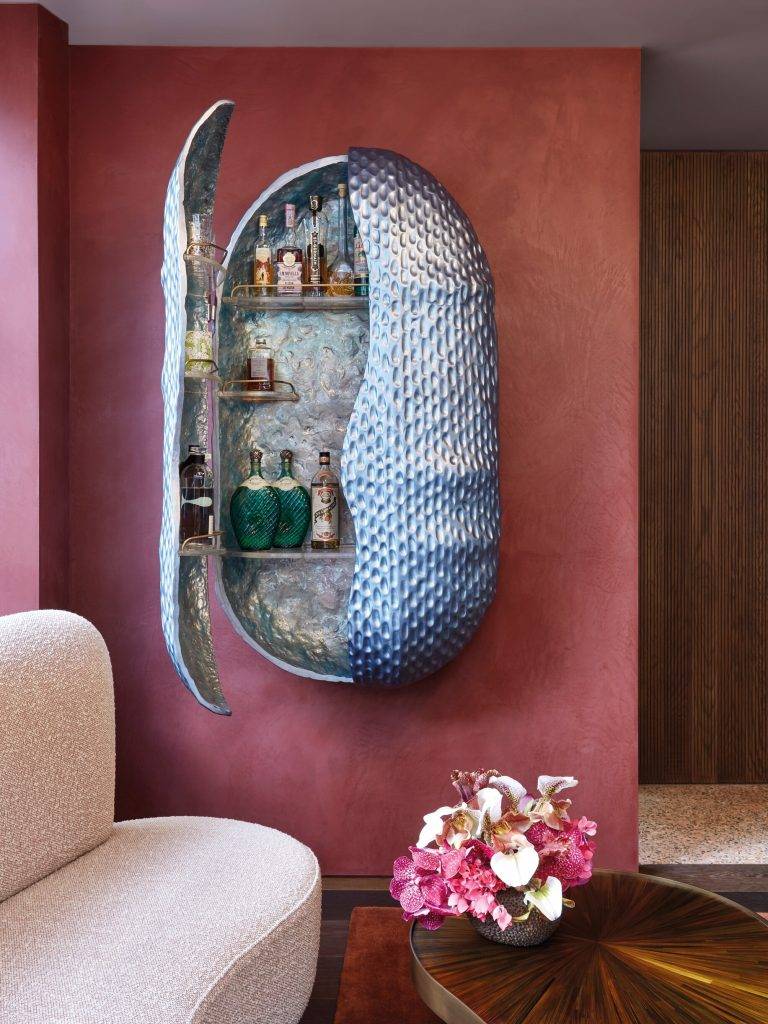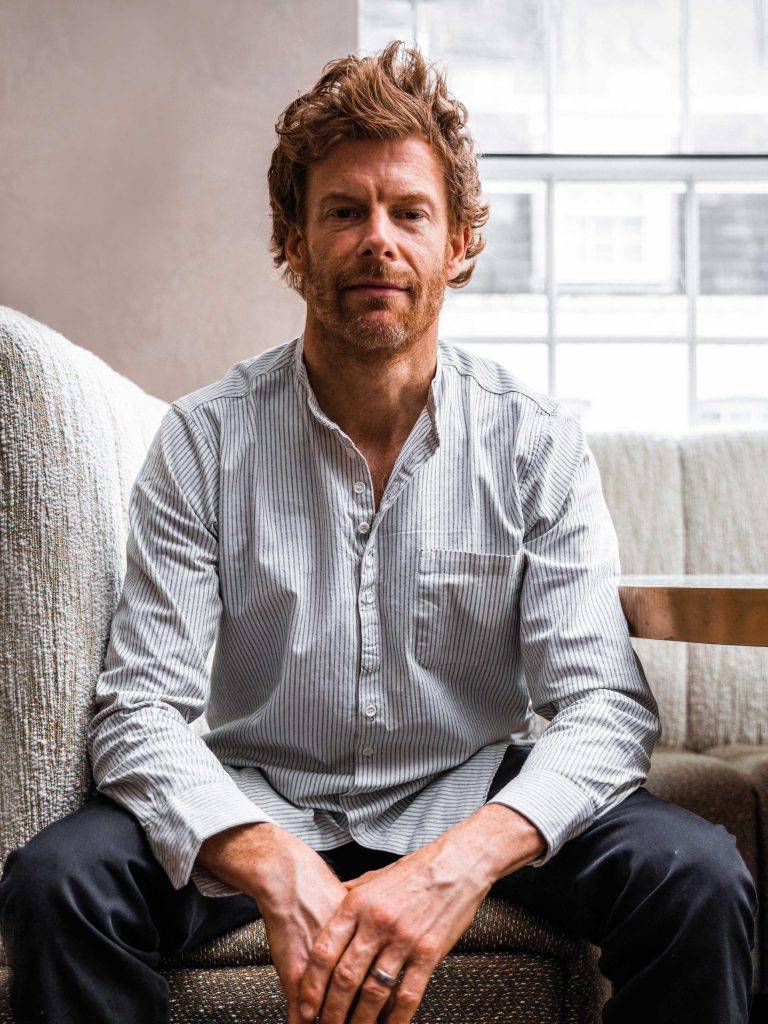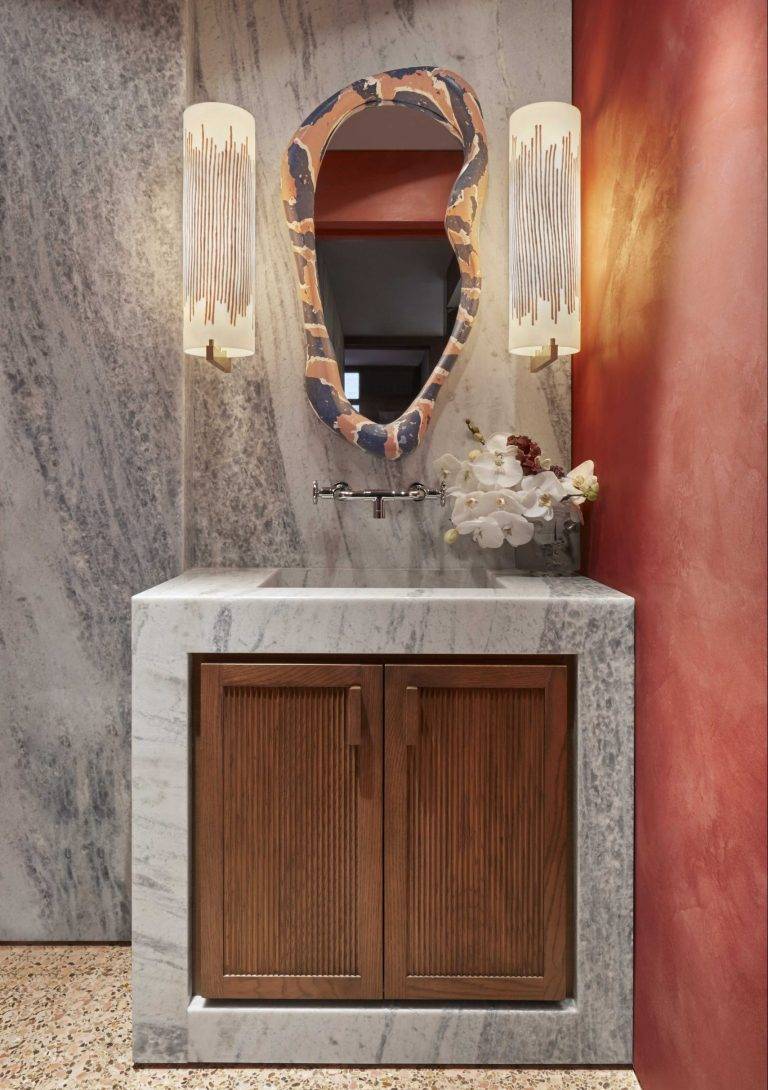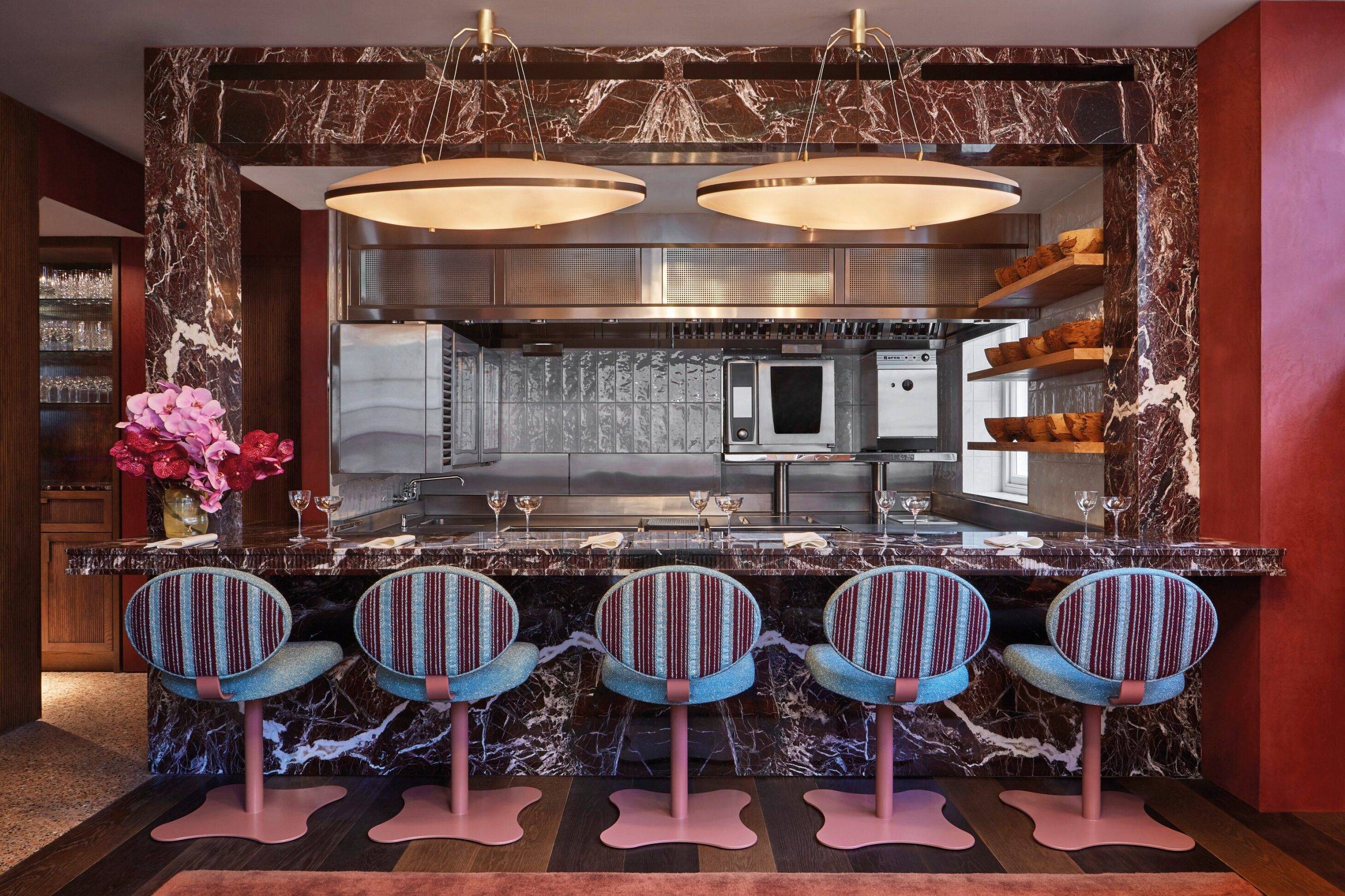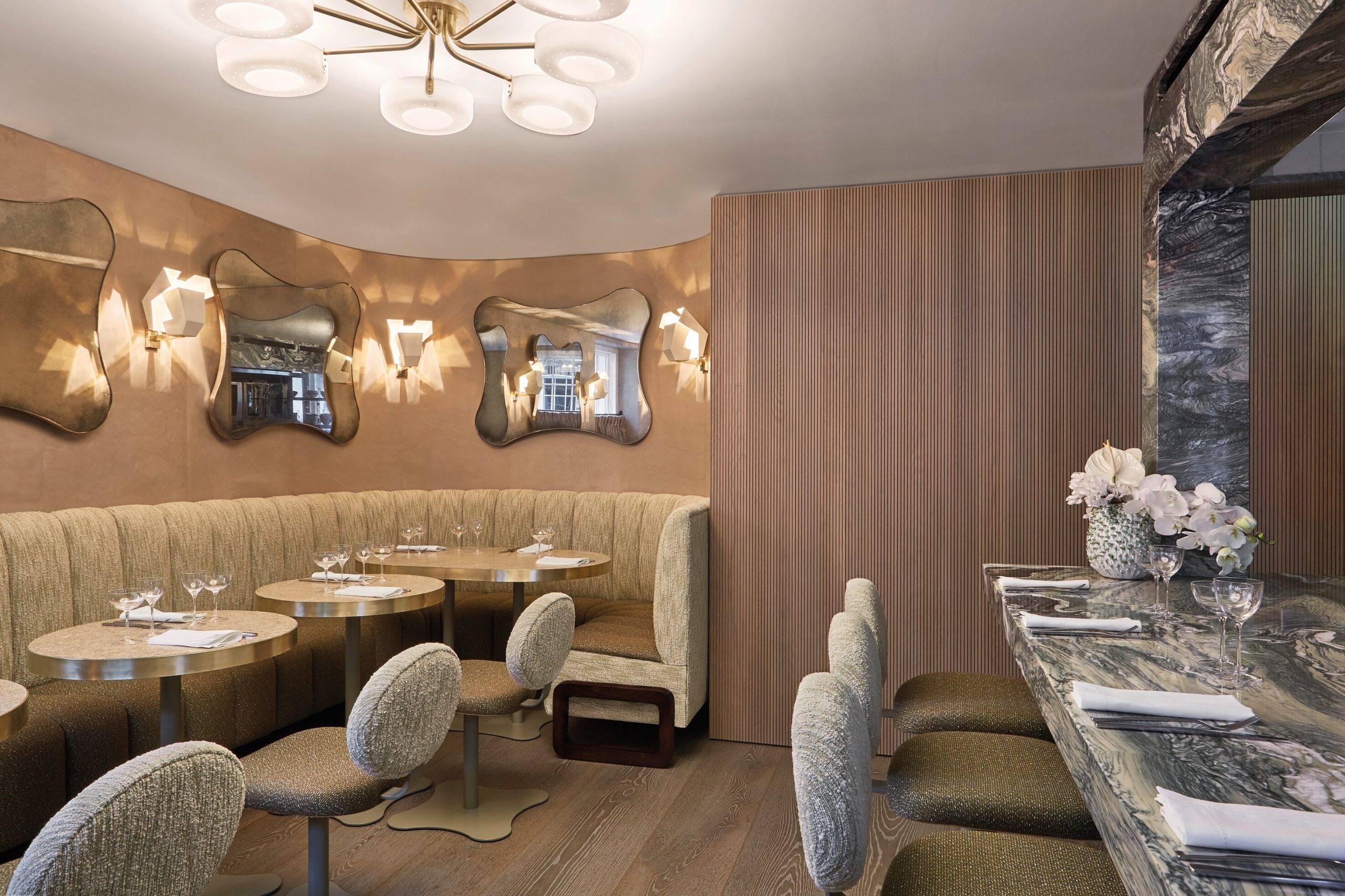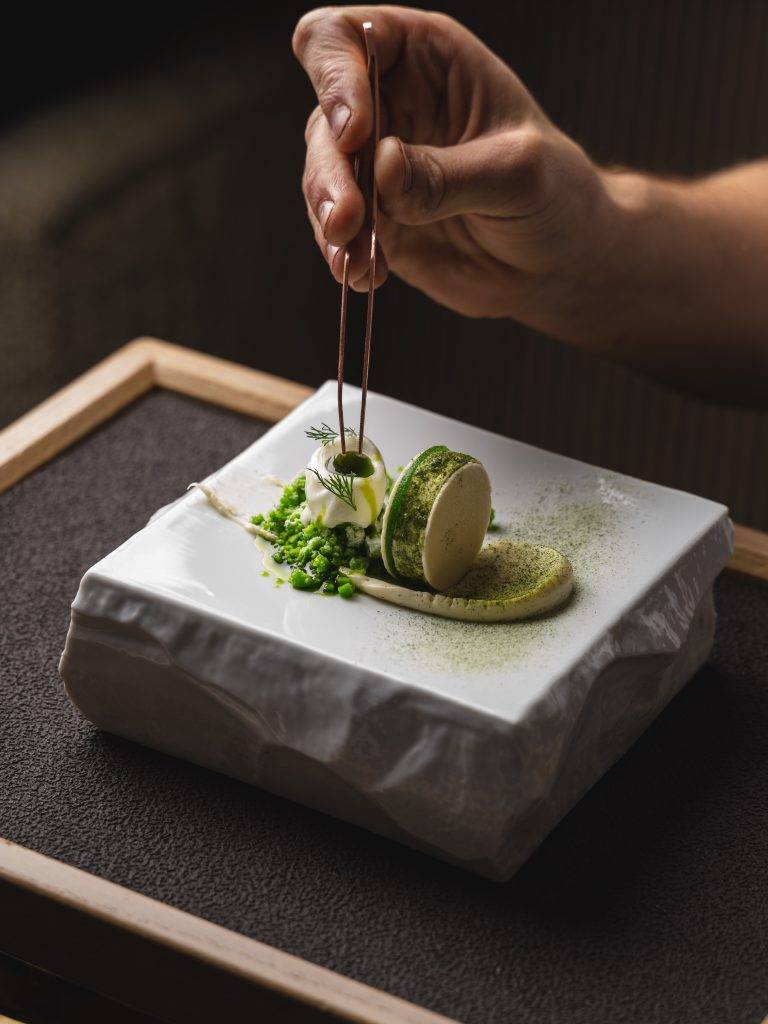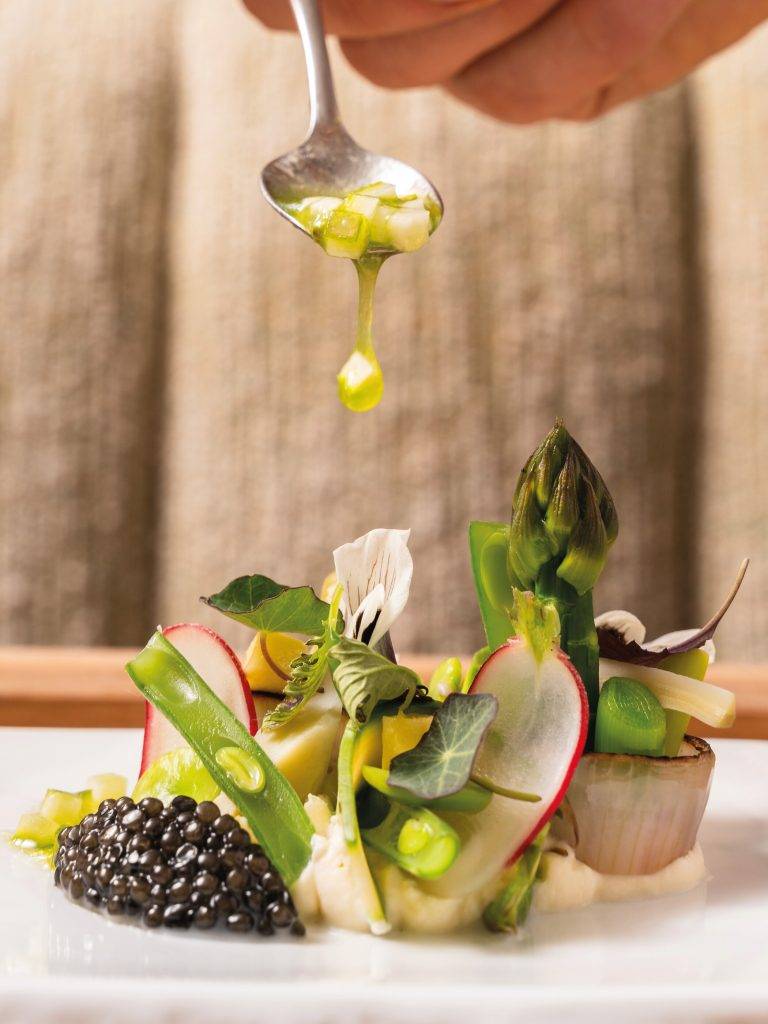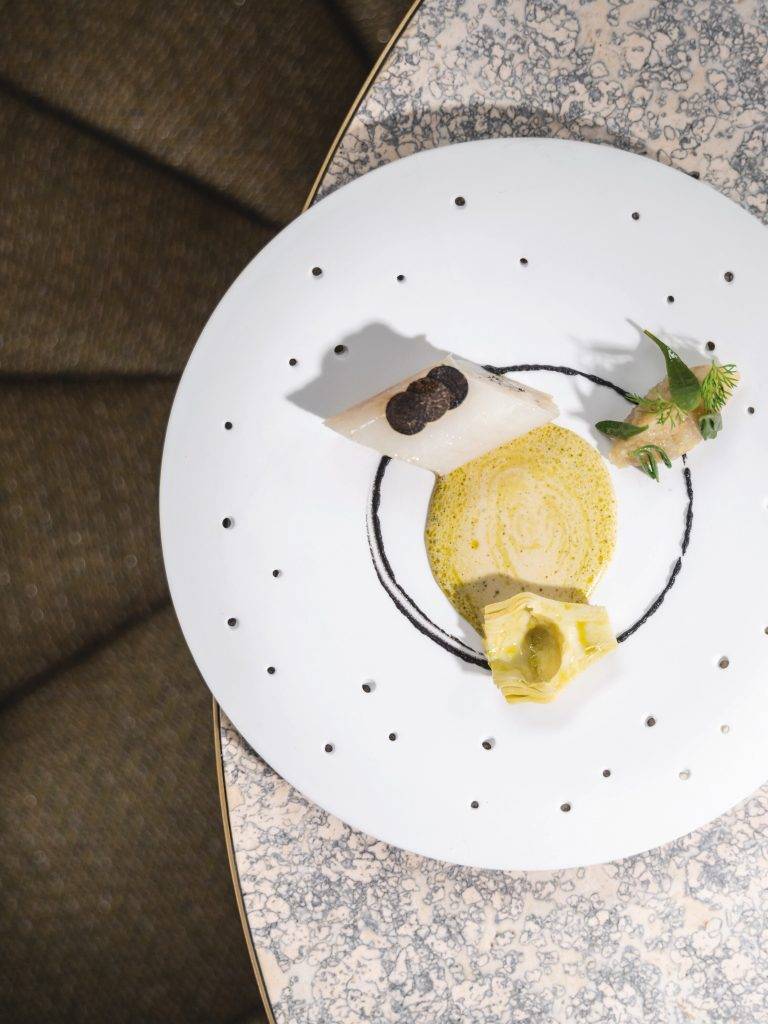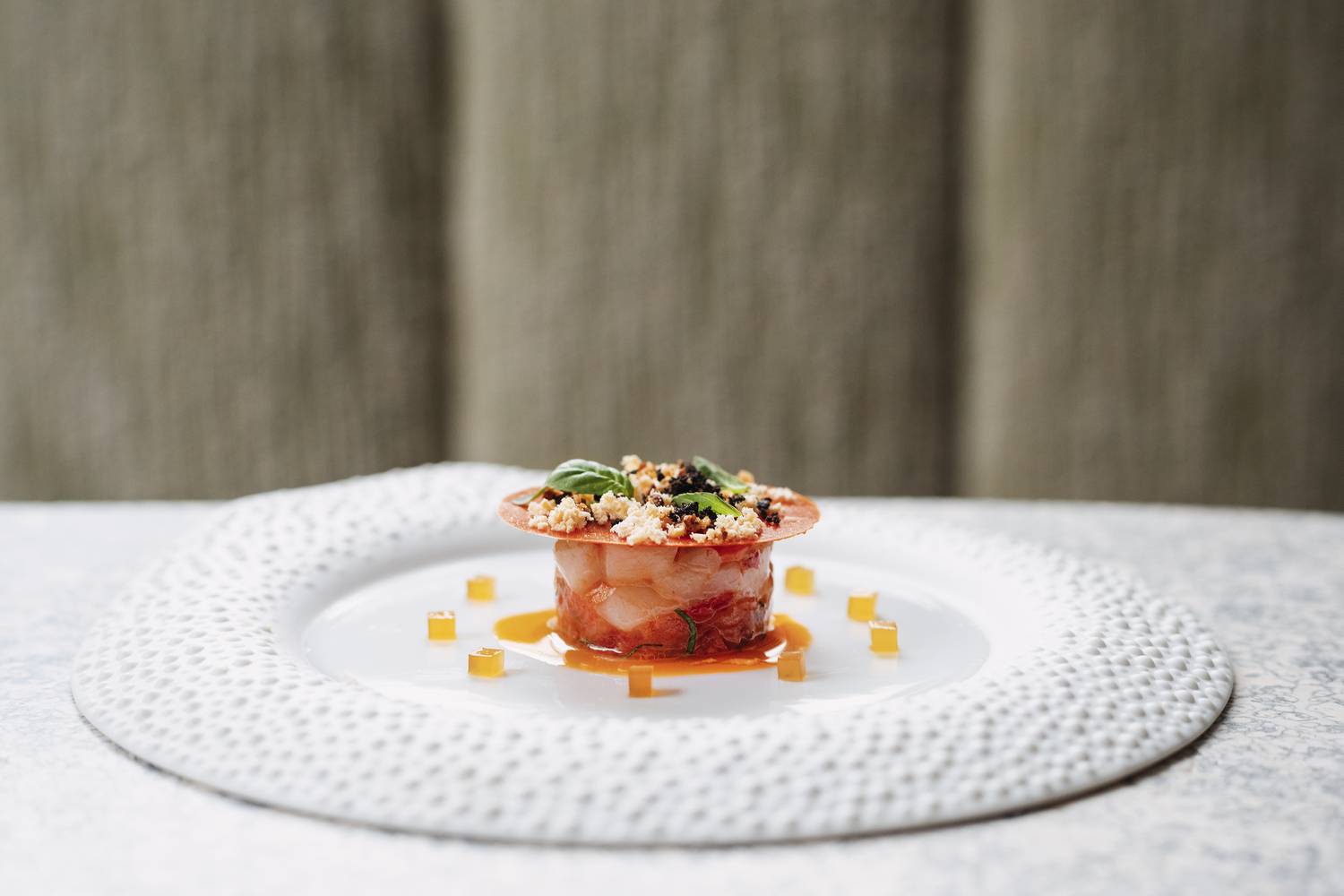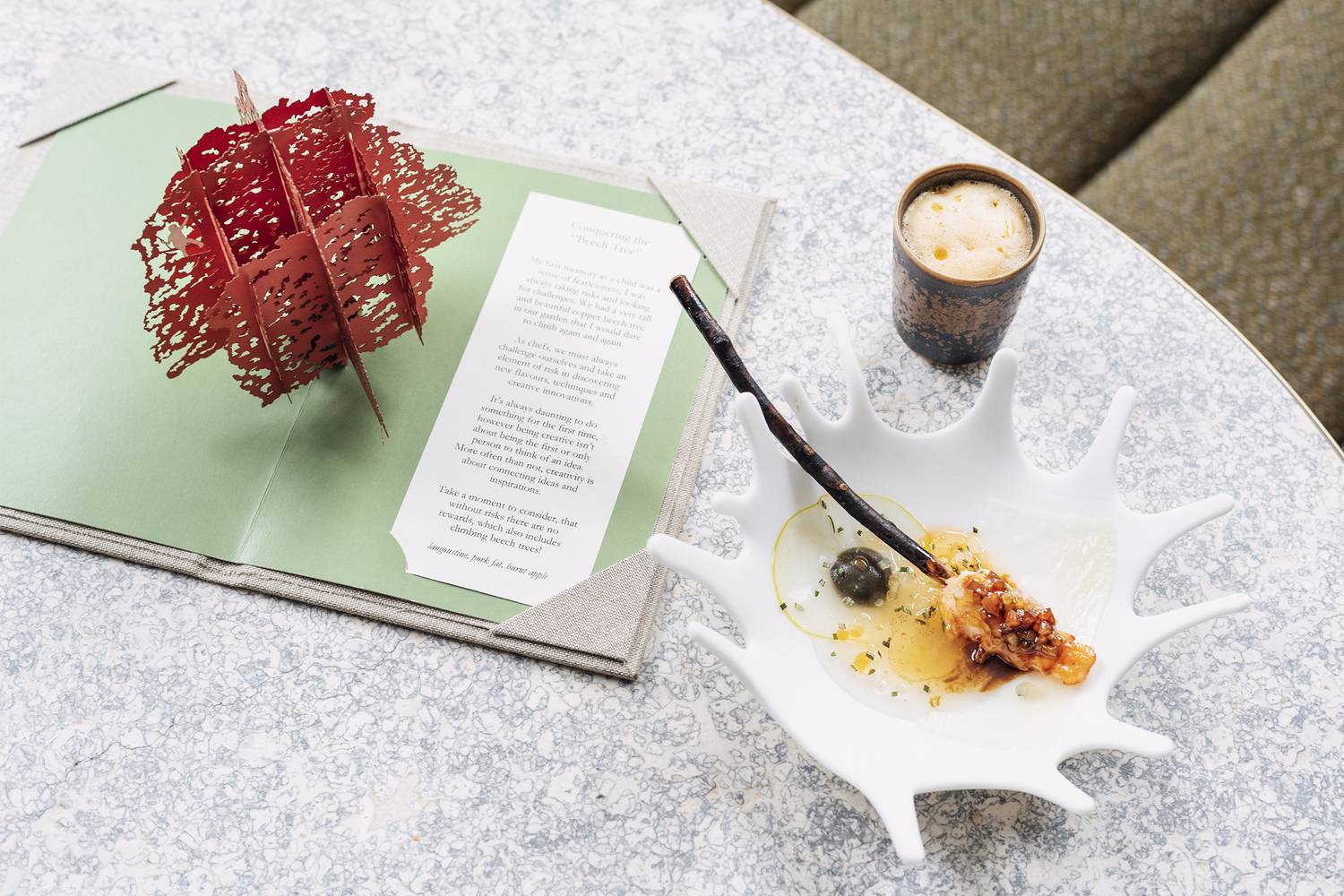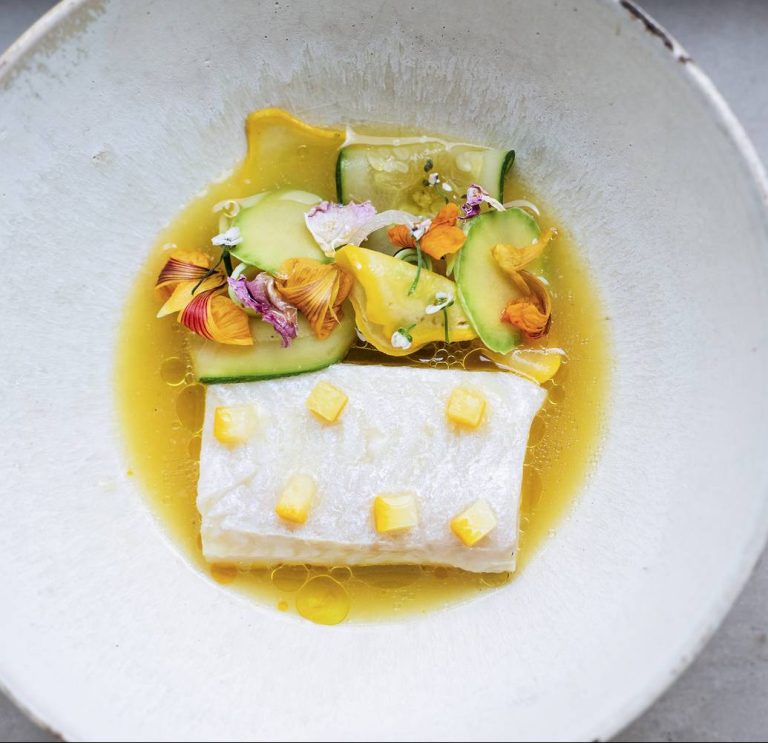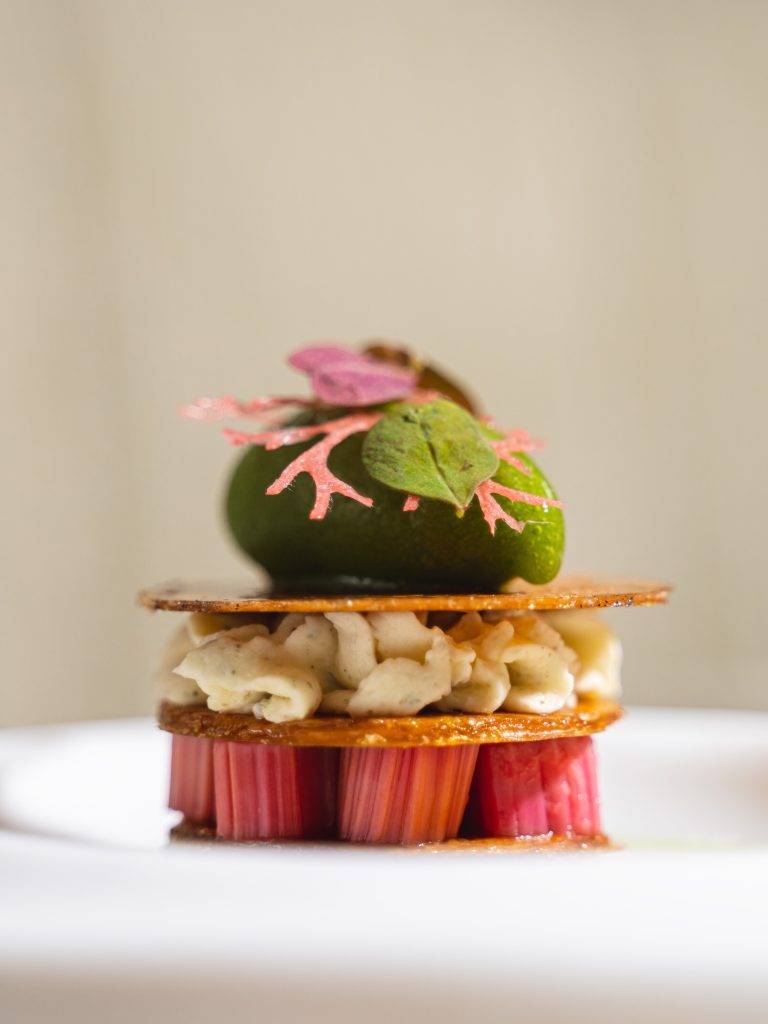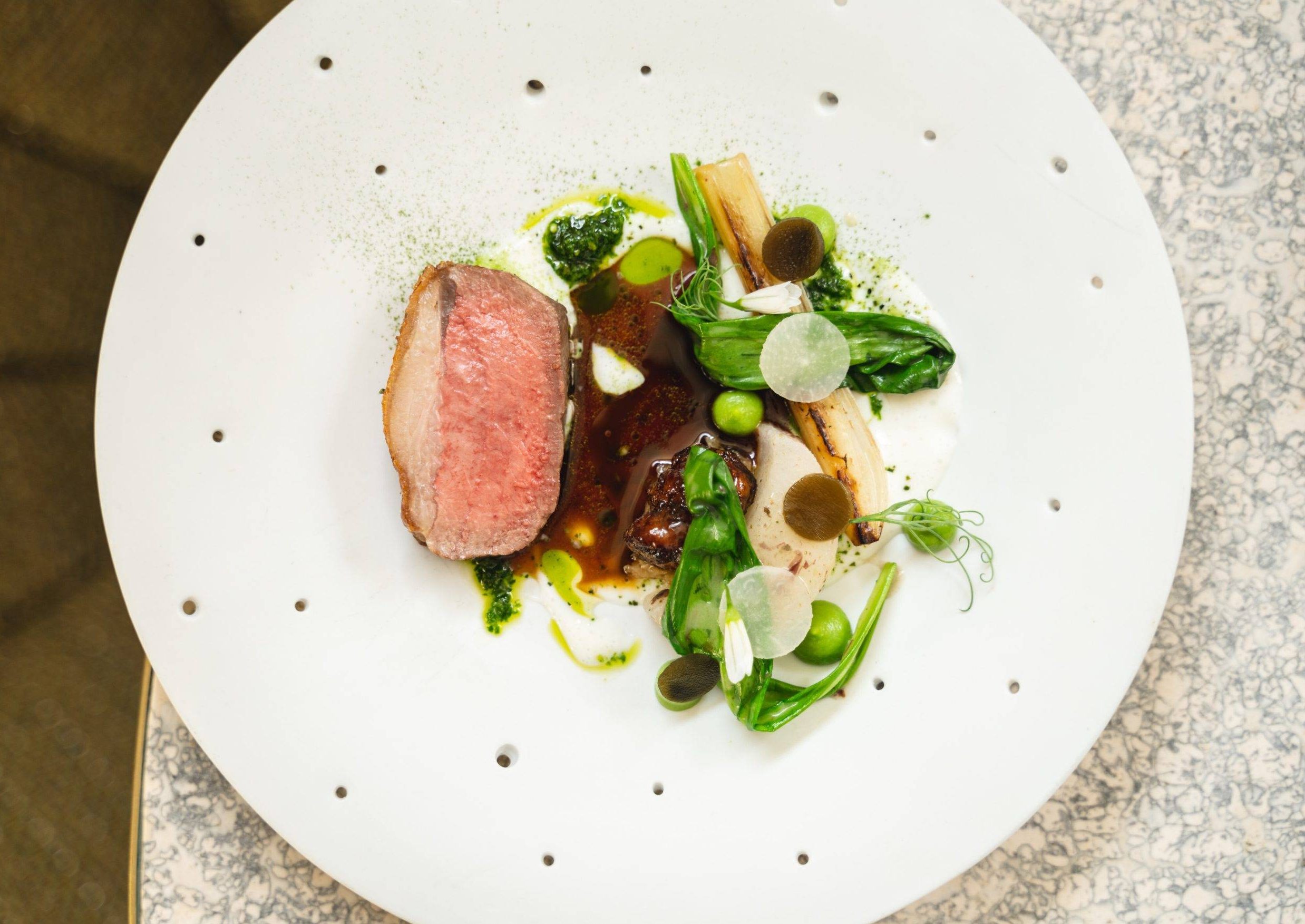Born in Norfolk, Tom Aikens’ childhood was a country-living dream. Days were spent gardening with his mother, followed by evenings cooking up a storm using the freshly picked produce. These experiences ignited a passion in Tom for food and cooking; his very own garden-to-table lifestyle that laid the foundation for an ingredient-focused culinary philosophy that continues to shine on in his kitchen to this day.
“As a child, my twin brother Rob and I would help our mother in the kitchen with the preparation of cakes, biscuits, jams, chutneys and home-cooked meals, using fresh vegetables picked from our garden,” reminisces Tom. “She was very passionate about homegrown produce, which rubbed off on the two of us. When I think back to those days when we were around eight, I still remember picking the raspberries and the sweet taste they would give. As well as our apple tree that would be overloaded with apples for crumbles, compotes and eating [them] fresh.”
It wasn’t only his mother whose work inspired Tom’s eventual career in the culinary arts, though. His father owned a wine business, which saw Tom visiting wineries at a young age, gaining insight into the perfect knowledge pairing that’s integral to chefdom.
“My father had his own wine business, importing and exporting wine, as well as a shop. So I had the best of both worlds. We got to go to France at an early age in the eighties, driving all the way from Norfolk down to the Auvergne and beyond. My father was a great map reader and would spend hours writing the best routes to travel through France, where we would stop off at different wine producers as well as little family restaurants. There were even some days when he would drop my brother and me off with a wine supplier/producer so he could spend lunch with them discussing business. We would sometimes end up in the vineyards, picking grapes and sweeping out the cellars, so from an early age, my exposure to food and wine was quite significant.”
But an understanding of viticulture wasn’t the only thing he gained on these road trips; one particular foray to France opened up Tom’s mind to the fine-dining world, creating an unforgettable memory that would eventually guide his vocation and doctrine as a chef.
“On one particular trip down to France, my father booked us into a Michelin-starred restaurant/hotel by complete accident. He only realised the magnitude of what he had booked when we arrived at the hotel to find our car surrounded by waiters wearing white gloves with white jackets and bow ties. I seem to remember the look on his face when they opened the car doors and lugged our bags up to the hotel.
“But that evening, I had the most amazing meal; it is one of those inspirational gastronomic moments that I will always remember. Ask any chef, and I think they will have something similar. Being in the eighties, it was still the era of nouvelle cuisine, tiny little portions delicately put together with the tiniest of details. I had the most beautiful simple tomato salad with stunning fragrant olive oil, basil, finely diced shallots, course sea salt, black pepper and chives, all these flavours I remember as if it was yesterday.”
A recollection so poignant that it’s this idea of creating unforgettable dining experiences that Tom fosters in his restaurant, Muse, today. Set in a renovated mews house in the heart of London, Muse is Tom’s take on homely fine dining that calls upon his childhood memories, professional culinary experience and passion for the finest produce.
“I wanted to create a home from home, for people to feel like they are being invited into someone’s front room. So I steered away from working with a restaurant designer this time and chose to work with home interior designer Rebecca Korner to create an inviting, luxurious interior, combining an eclectic mix of furniture and lighting with exquisite fabrics, decadently rich woods and jewel-toned marbles. Complementing one another, Muse’s food and interior work hand in hand to create a truly magical dining experience.
“The menus at Muse have been inspired by nostalgia, pivotal moments and key people from my personal life and career. Through my own take on experience-led dining, Muse invites guests on a culinary journey designed to create lasting memories. Each dish harks back to something or someone who has influenced me, paying a subtle and artful culinary homage.”
Some of these significant people include the likes of chefs Pierre Koffmann at La Tante Claire, Joël Robuchon, and David Cavalier at Michelin-starred Cavalier’s restaurant in Battersea. Cavalier was, in fact, the first chef who gave Tom a position in a kitchen. As Tom admits, getting your foot in the door at top restaurants in the nineties wasn’t easy, but after offering to work for free for six months, Cavalier agreed to have Tom on his brigade. Tom then moved to Pied à Terre to work with David Neat before packing his bags for Paris to take a position in Robuchon’s three-star kitchen, which was an eye-opening experience for the young chef.
“Robuchon ran the service and kitchen like an army operation. Each section had between two and six chefs. No one was allowed to talk; it was a completely quiet kitchen, unlike Koffman’s, which was more vocal. When checks came in, Robuchon read them out, and you had one moment to write all the information down and get it right. We would have to write on a piece of tin foil stuck to the wall as the orders came in: how the meat was cooked, what the table number was and the timings, as well as cook and plate. In the service, you could not ask, look or speak to Robuchon, so you had to concentrate all the time. The produce was the best I had ever seen; fresh ingredients every day, from truffles to ceps, wild strawberries, fresh almonds and peaches.”
After his time with Robuchon, Tom’s next professional step was not necessarily an easy decision, but one that turned out to have a monumental impact on his future. It not only signified an important milestone he had set out for himself but also ended up making gastronomic history.
“When I was 25, I got the call from David Moore at Pied à Terre about returning to be a co- owner and Head Chef. It was a very big decision, and I thought long and hard about it. I remembered how, when at college, a teacher who took a dislike to me told me that I wasn’t good enough and would never make anything of myself — in fact, he said I had only been accepted to the college because of my twin brother as they didn’t want to split us up. From that moment, I had it in my mind to be a Head Chef by the age of 26; because if I had not, I would be a failure. So it was a momentous coincidence that I had to take, as there was no other opportunity to be a Head Chef at the age of 26. Pied-à-Terre is where I became the youngest British chef ever to be awarded two Michelin stars, aged just 26.”
Tom’s career has seen continued success since his time at Pied à Terre, including his restaurant Muse being awarded a Michelin star. A notable achievement, especially since it opened just as COVID hit when the constant closures and rules wreaked havoc in the hospitality industry. It’s perhaps Tom’s dedication to not only creating tasty food but also fostering a customer-centric space where every diner is made to feel truly special that resulted in his restaurant standing out and persevering through these hardships.
“Throughout the menu at Muse, we immerse and engage with the guests to ensure that they have several memorable experiences when they leave. The last experience when a guest leaves Muse is one of my favourites; they take home a little box of treats, a nightcap called Free Spirit, which is a seasonal infusion made by me. Then for the morning, they get a little Muse-made pastry with a seasonal jam, like raspberry, blackcurrant or elderberry. Then two muslin tea bags of seasonal foraged dried herbs and fruits that, again, I have collected. It’s just going that extra inch to make a guest have the very best time.”
“Everything at Muse is driven by seasonal produce and the philosophy of creating lasting memories, as without these, you don’t get regular customers. We do a single tasting menu that is communicated as stories throughout the menu. Each dish has just three ingredients as a headline with a personal story underneath, giving guests a feeling of inquisitiveness, apprehension and excitement before they even get the food. Mystery and intrigue create an experience, and a journey should be at the forefront of any menu. Each dish I make has been well thought out as to why it appears on the menu and leaves a lasting impression. It creates a nostalgic, feel good experience for people to reflect on in their own way, as food is so personal, and each person reads it differently.
“I’ve spent more of my free time in the countryside, where I love to be out in the open space as I’m a bit of a country boy at heart being from Norfolk. Inspiration sometimes comes from past creations as I like to reinvent dishes that have worked well in the past. I am far more balanced these days in terms of my own style, and with the help of my senior chef team, such as my Head Chef Seamus Sam, Senior Sous Chef Joe Brackenbury and our Research and Development Chef Sam Ashton Booth, who are all with me at Muse, we discuss together the seasonal changes, along with the components and the creative process of the dish. As with all chefs, the seasons are the starting blocks to what we do, but now that I have been a chef for almost 35 years, I’ve got quite a few ideas in the memory bank. We will discuss the cooking method to be used, experiment with the dish’s presentation, including what vessel or plate ware will work well with that specific dish and style of presentation. We will often experiment with a few different presentations of plating before the dish is officially added to the menu, and then we go into the matching of the wines with Julien Arribillaga.
“Dishes change every four to six weeks; however, currently, you can expect dishes such as snails in garlic and red wine. The humble snail is slow-moving but certainly packs a flavour punch. Cooking under renowned chef Pierre Koffmann, I fell in love with the art of preparing this wonderful garden creature. We have a Dover sole, truffle and artichoke dish titled Patience is a Virtue, a nod to the thirteen- to seventeen-year wait we must endure before the Dover sole fish reaches its prime. Then there is a cucumber and cream cheese sandwich, which is a pre-dessert titled Wait and See. Many of you will remember your mother’s voice when asking: ‘What’s for dessert?’ All I will say is that it is a sweet, seasonal delight — an idea inspired by my favourite sandwiches as a child.”
“I will always try to source ingredients as locally as possible, no matter the country I am in. I adapt my menu according to what the suppliers can provide me with. I will always serve the freshest and best quality ingredients to our guests. Sustainability is the key element to sourcing the best-quality ingredients. If the produce grown is harmful to the planet, then it is damaging the produce itself, which, of course, affects its taste. I believe that the best meals can be made from the most simple recipes, provided that you get the best ingredients, as food is strongly linked to the whole concept of sustainability.
“At Muse, we use many great suppliers across the United Kingdom, including suppliers such as Lake District Farmers, who produce some of the best-quality, breed-specific meat. The shellfish from Keltic Seafare is sourced from crystal clear ‘Class A’ waters off the North- West Highland Coast of Scotland, and their dedicated and hardy fishermen strive to bring us the best the seas can offer, whatever the weather; I have been using them since 1995 from Pied à Terre days. Old Hall Farm produces amazing raw milk products, from cream to butter to milkshakes. At Muse, we use their wonderful thick cream and milk for our homemade ricotta course titled Just Down the Road, as I used to live just twenty minutes away from the farm. We also make our cultured butter from their cream served alongside our sourdough bread. These are just a few of the suppliers we use, which I believe are truly the best in their game in terms of quality and freshness.
“My favourite signature dish on the menu at Muse has to be our langoustine, pork fat and apple dish titled Conquering the Beech Tree. My first memory as a child was a sense of fearlessness; I was always taking risks and looking for challenges. We had a very tall and beautiful copper beech tree in our garden that I would dare to climb again and again. As chefs, we must always challenge ourselves and take an element of risk in discovering new flavours, techniques and creative innovations. It’s always daunting to do something for the first time; however, being creative isn’t about being the first or only person to think of an idea. More often than not, creativity is about connecting ideas and inspirations. Take a moment to consider that without risks, there are no rewards, which also includes climbing beech trees!”
This idea of pushing the boundaries is something that has undoubtedly led to Tom’s triumph in the restaurant industry. Always striving to learn more, he sets his eyes firmly on his goals and stops at nothing to achieve them. An admirable work ethic that will surely lead Tom to incredible culinary heights — and we, for one, can’t wait to see what his future holds…
To find out more about Toma and Muse, contact the restaurant using the below details:
Muse by Tom Aikens
38 Groom Pl
London SW1X 7BA
United Kingdom
Web: musebytomaikens.co.uk
Email: info@tomaikens.co.uk
Online Bookings: sevenrooms.com/reservations/musebytomaikens
Instagram: @musebytomaikens
Facebook: @MusebyTomAikens
